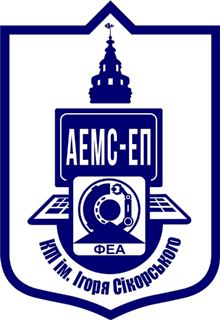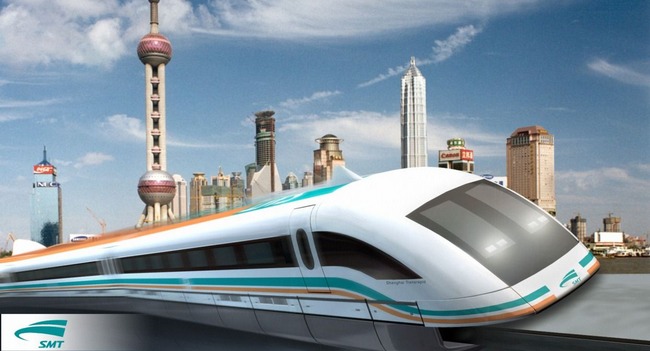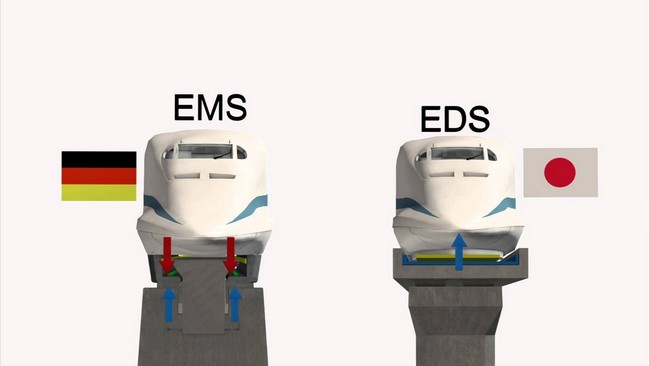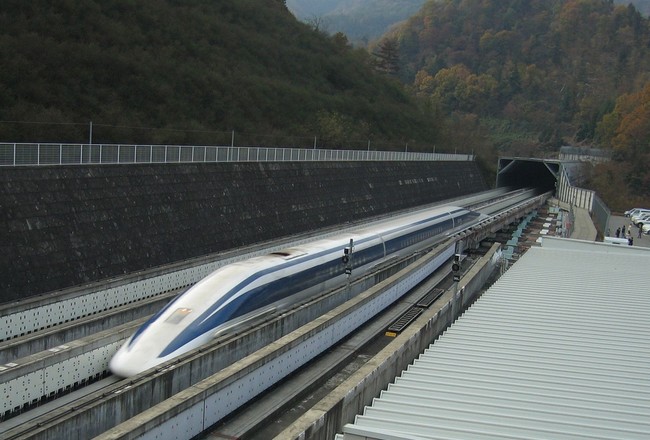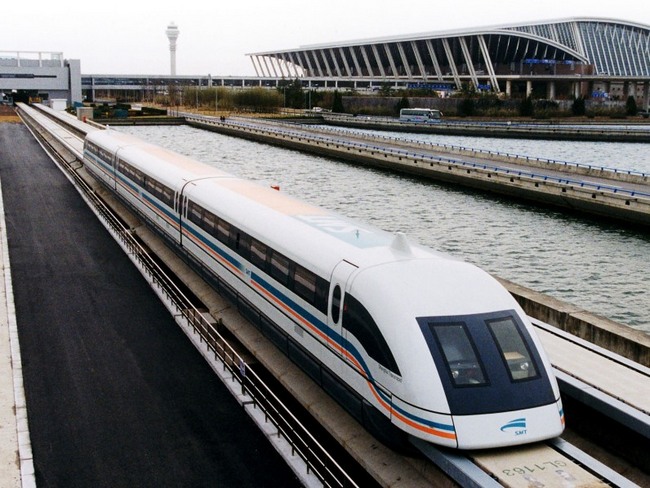MAGNETIC PILLOW TRAINS – TRANSPORT OF THE FUTURE
Maglev trains (from the words “magnetic levitation”) are the fastest type of ground public transport. Although only a few such systems have been put into commercial operation so far, research and testing of prototype magnetic trains is being conducted in different countries.
HOW IT WORKS
We know about the basic properties of magnets from school physics lessons. Everyone played with ring magnets from speakers as a child. If you bring the North Pole of a permanent magnet to the North Pole of another magnet, they will repel. If one of the magnets is turned over, it will attract. This simple principle is laid down in maglev trains, which fly through the air over the trackbed at a short distance.
Magnetic suspension technology is based on three main subsystems: levitation, stabilization, and acceleration. At the same time, at the moment there are two main technologies of magnetic suspension and one experimental, proven only on paper.
Trains built on the basis of electromagnetic suspension (EMS) technology use adjustable DC electromagnets for levitation. At the same time, the practical implementation of this system is similar to the operation of conventional railway transport, but instead of wheel pairs, a system of electromagnets is used – support and guides. In this case, the support and guide magnets interact with the magnetic circuits located on the edges of the T-shaped path. The main disadvantage of EMS technology is the small distance between the support Magnet and the stator, which is 15 millimeters and must be controlled by special high – speed automatic air gap adjustment systems. Transrapid trains and, in particular, the Shanghai Maglev are built on the basis of EMS technology.
Trains based on EMS technology are driven and braking by a linear motor, which is a conventional stator (a fixed part of a linear electric motor) deployed along the lower part of the web, and the support electromagnets, in turn, work as the rotor of this electric motor. Thus, instead of generating torque, the alternating current in the coils generates a traveling electromagnetic field that moves the train non-contact. Changing the AC power and frequency allows you to adjust the traction and speed of the train.
In the case of electrodynamic suspension (EDS) technology, levitation is performed when the magnetic field created by superconducting magnets on board the train interacts with the electrically conductive web. Japanese Jr-Maglev trains are built on the basis of EDS technology. Unlike EMS technology, which uses conventional electromagnets with a continuous power source, superconducting electromagnets conduct current even after the power source is turned off. However, the cryogenic cooling system used to maintain ultra-low temperatures in the coils is proving to be quite expensive.
The main advantage of the EDS system is high stability – when the distance between the web and the magnets is reduced, a repulsive force occurs that returns the magnets to their original position, while increasing the distance reduces the repulsive force, which leads to stabilization of the system. In this case, no electronics are required to control and adjust the distance between the train and the track.
At the same time, a force sufficient to levitate the composition occurs only at high speeds. For this reason, a train running on the EDS system must be equipped with wheels that allow movement at low speeds (up to 100 km/h).
It is also worth noting that strong magnetic fields in the passenger section create the need to install magnetic protection. Without shielding, traveling in such a car for passengers with an electronic heart stimulator or magnetic storage media (HDD and credit cards) is contraindicated.
The third technology that is close to implementation, which exists so far only on paper, is the EDS variant with Inductrack permanent magnets, which do not require energy to activate. Until recently, researchers believed that permanent magnets do not have enough force to levitate a train. However, this problem was solved by placing magnets in the so-called “Halbach array”. The magnets are positioned in such a way that the magnetic field occurs above the array, and not below it, and are able to maintain the levitation of the train at very low speeds – about 5 km/h. True, the cost of such arrays of permanent magnets is very high, so so far there is not a single commercial project of this kind.
MAGNETIC PILLOW TRAINS IN THE GUINNESS BOOK OF WORLD RECORDS
At the moment, the first line in the list of the fastest magnetic cushion trains is held by the Japanese solution JR-Maglev MLX01, which on December 2, 2003 on the test track in Yamanasi managed to reach a record speed of 581 km / h.
If you look at the closest competitors, then among them it is worth noting the Shanghai Maglev Transrapid SMT, built in Germany, which managed to reach a speed of 501 km/h during tests in 2003 and its progenitor – Transrapid 07, which overcame the milestone of 436 km/h back in 1988.
Read more in the full-text article on our website in the section “interesting things in science and technology”.
ДЖЕРЕЛА
- Скрипин В. Поезда на магнитной подушке – транспорт, способный изменить мир. URL: https://itc.ua/articles/poezda-na-magnitnoy-podushke-transport-sposobnyiy-izmenit-mir/
- Теряєв В.І, Ліберт Н.Є. Монорейки КПІ: історія магнітного польоту. Київський політехнік. Газета НТУУ КПІ ім. Ігоря Сікорського. 2018. № 3 (3219). С. 6-7. URL: https://kpi.ua/monorail
